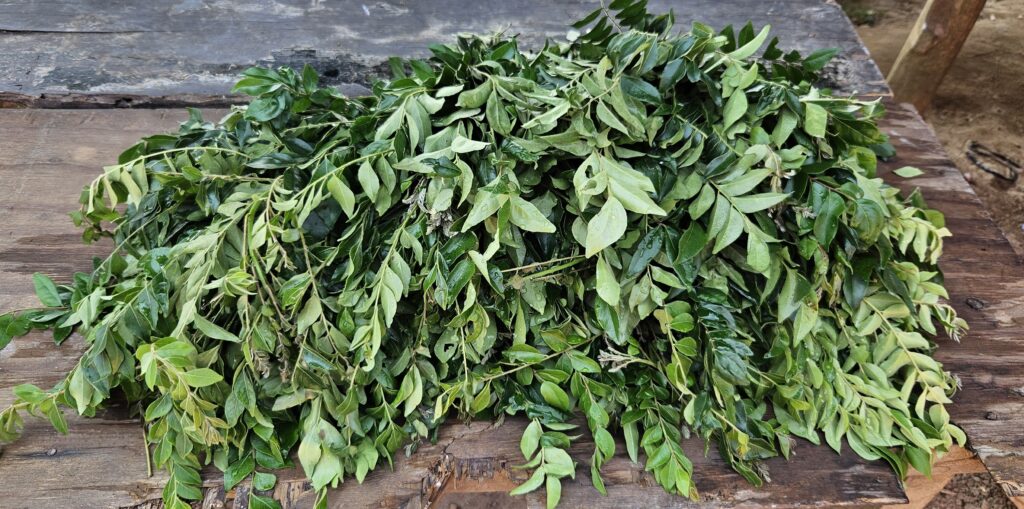
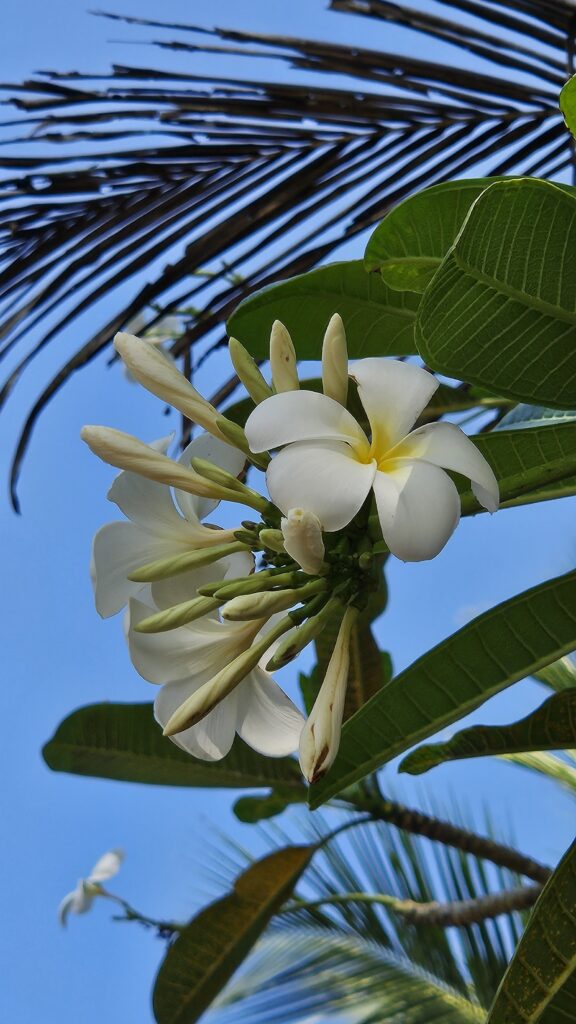
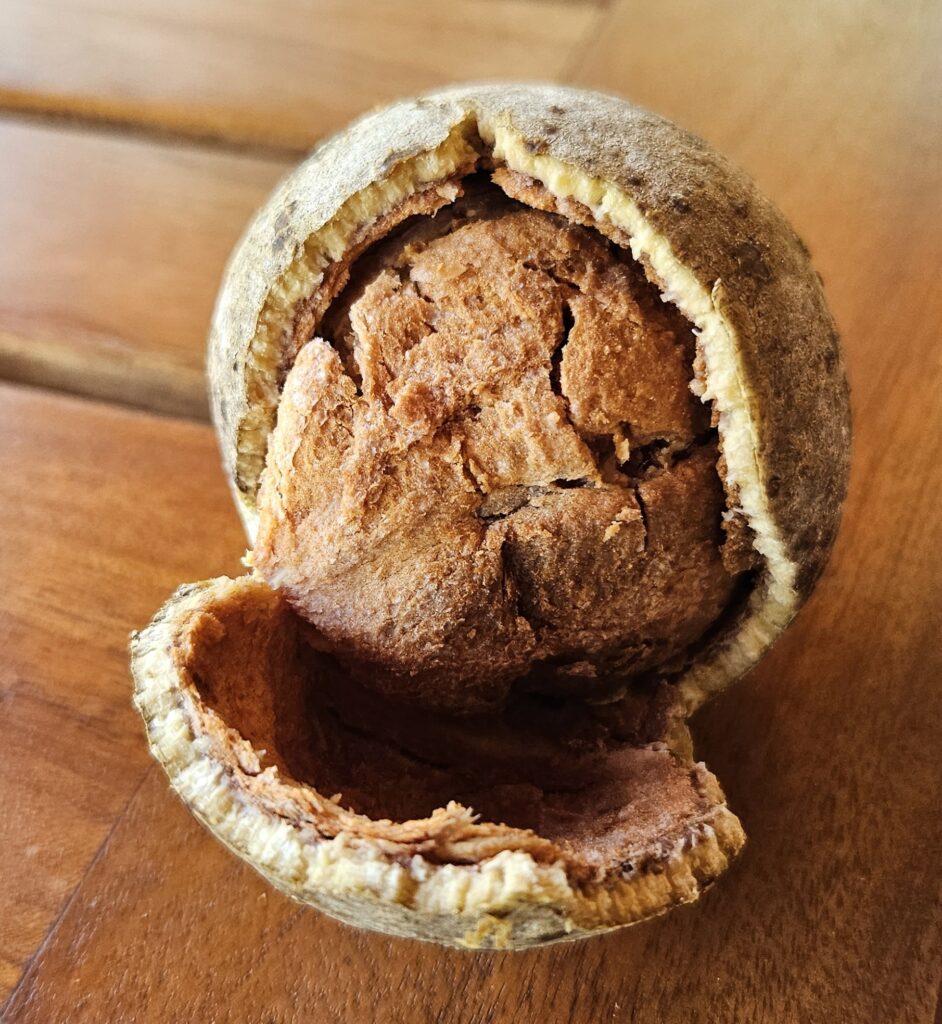
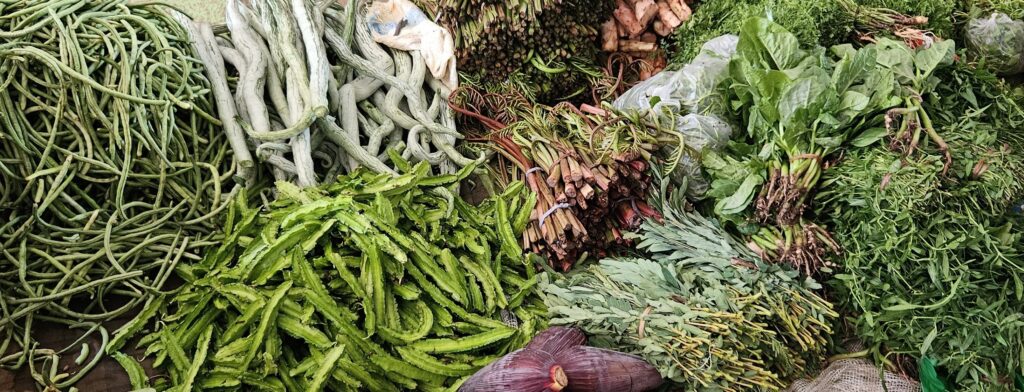
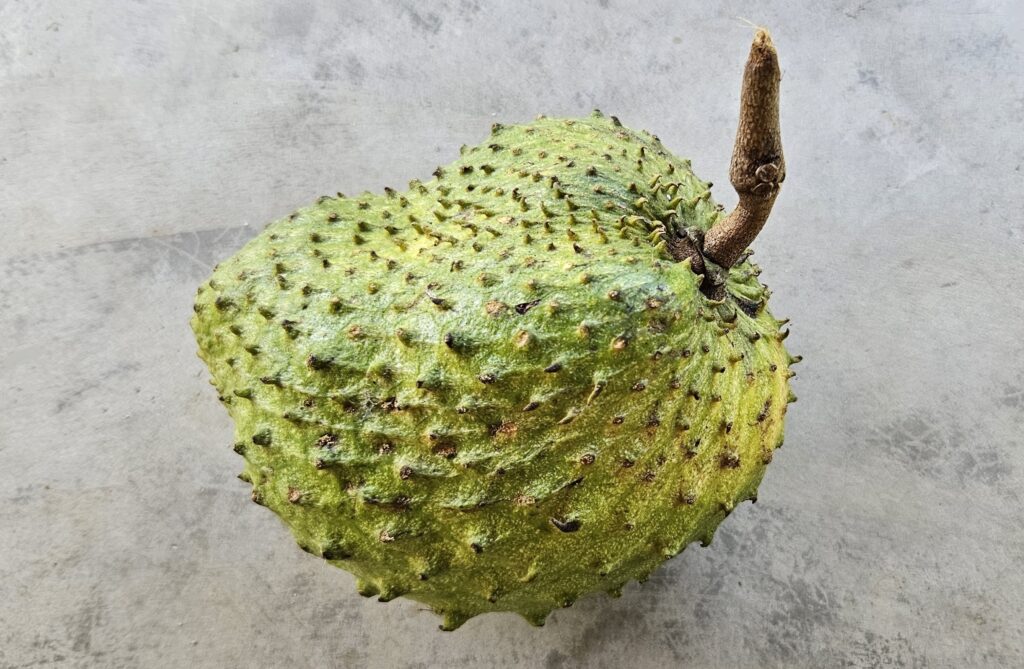
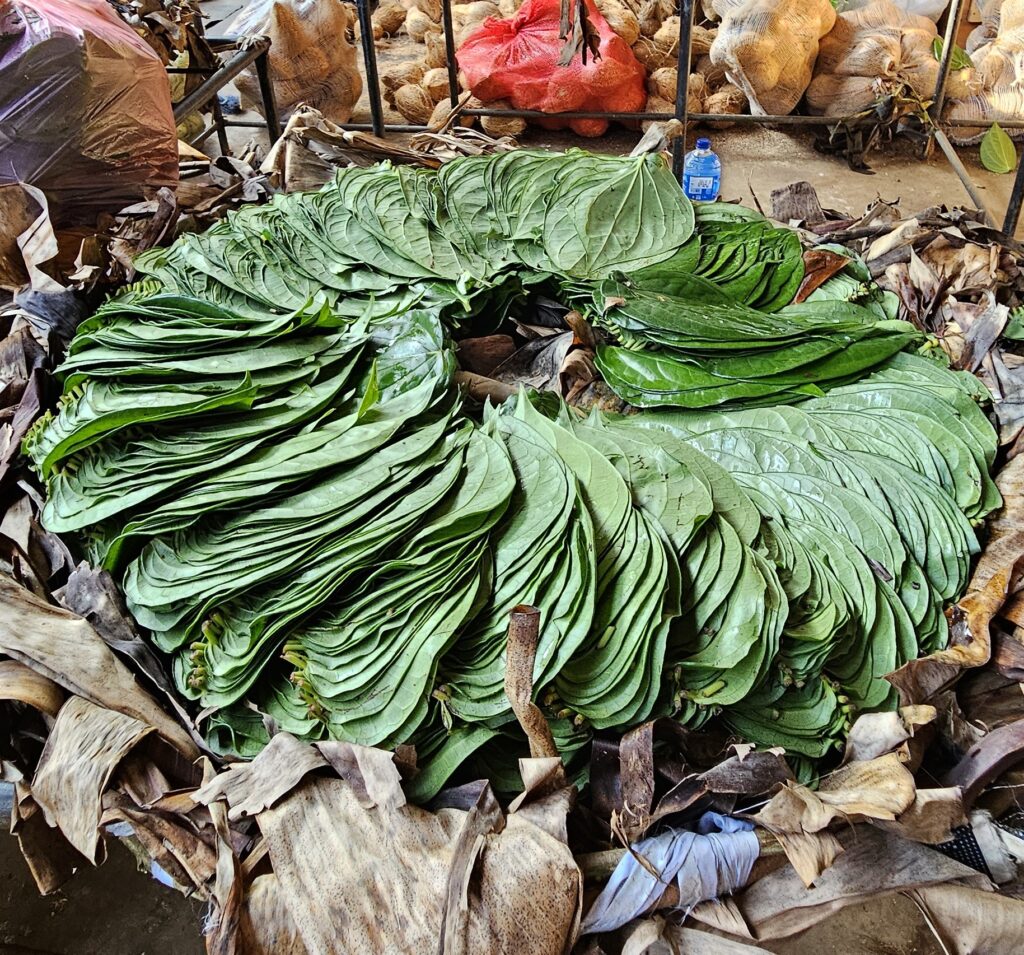
- Versatile Flora
- National Tree of Sri Lanka
- Cinnamon
- Flowers
- Fruits
- Ginger-related Plants
- Medicinal Plants
- Mimosa
- Kapok Tree
- Neem, Teak and Ebony
- Palms
- On the Markets
- Vegetables
Sri Lanka’s Plant Life
Versatile Flora
In Sri Lanka, almost every tree and plant is useful, almost every grass can be put to use. Aromatic spices commonly found in our kitchens, such as cinnamon, cloves, cardamom and pepper, grow here. Ceylon cinnamon, in particular, is world-famous and considered especially high-quality.
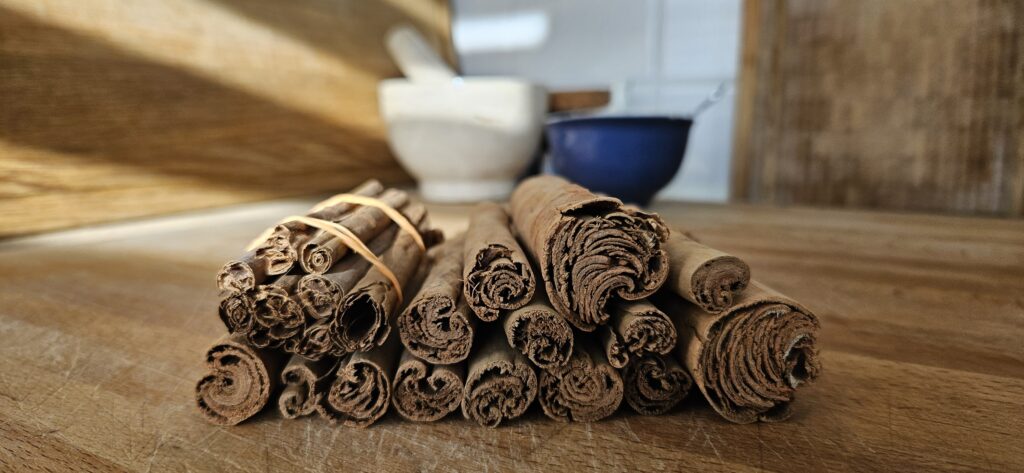

National Tree of Sri Lanka
The national tree of Sri Lanka is the Ceylon ironwood (Mesua ferrea, also known as cobra saffron); locally, it is called the Na tree. This native tree was granted national status due to its historical and cultural significance, its distinctive appearance, and its usefulness.
It features large, fragrant white flowers with yellow-orange stamens that contain pollen. Young leaves appear in pinkish-red tones before turning green. The ironwood tree is highly versatile: its seeds, buds, leaves and flowers are edible and also used for medicinal purposes, as are its fruits.
The wood, known for its exceptional durability and the origin of the tree’s name, is not processed for religious reasons. According to tradition, the Buddha is said to have rested beneath a Na tree during his first visit to Sri Lanka.
Cinnamon
Who would have thought that the stems of cinnamon leaves have a particularly aromatic cinnamon flavor? In the case of the Ceylon cinnamon tree (Cinnamomum verum), however, it is mainly the inner bark of young branches that is used – both as a spice and for medicinal purposes.
Cinnamon is one of the oldest known medicinal plants in the world. It was already valued in Ayurvedic and Chinese medicine for its warming and healing properties. Today, we know that cinnamon can do much more than just refine an apple strudel.
It is particularly known for its blood sugar-lowering effect – ideal for people with type 2 diabetes or insulin resistance. In addition, cinnamon has anti-inflammatory, antioxidant, and immune-boosting properties. Its essential oils, especially cinnamaldehyde, have antibacterial and antiviral effects. It also benefits digestion: cinnamon relieves bloating, promotes the production of gastric juices, and helps with feelings of fullness. The plant can also lower cholesterol levels and has a stimulating and mood-lifting effect – especially beneficial during the cold season.
The trees grow mainly in the hinterland of the southern and southwestern coasts and can reach heights of up to 12 meters. However, we also spotted cinnamon trees in the Sinharaja rainforest and in a spice garden. Cultivated specimens remain significantly smaller due to pruning and are not always easy to recognize. If you’re interested, it’s worth asking locals where such trees can be found nearby (cinnamon is called Kurundu in Sinhala). They are usually very knowledgeable about the local flora.
If you want to consume cinnamon regularly, you should opt for Ceylon cinnamon. In contrast to the commonly sold Cassia cinnamon, it contains only very small amounts of coumarin, which can be harmful to the liver in high doses.
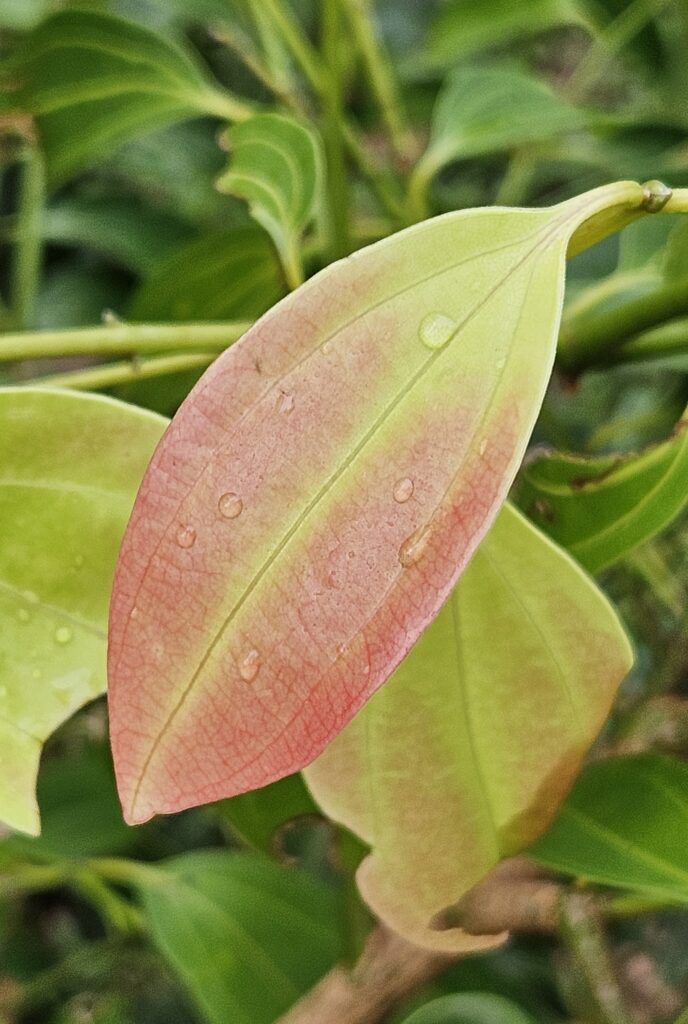
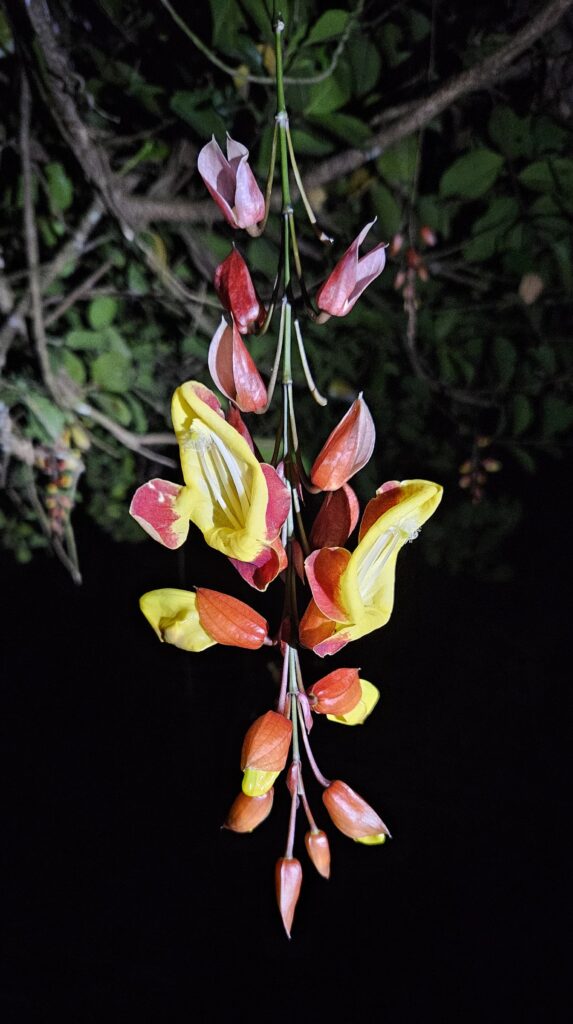
Flowers
Sri Lanka is famous for its colorful blooms that brighten gardens, temples, and roadsides all year round. Although we saw many more flowers, we’d like to present just a small selection of those blossoms that left a lasting impression on us:
Especially striking is the blue water lily, also known as Star Lotus (Nymphaea nouchali). As the national flower, it decorates many ponds and lakes and symbolizes purity, truth, spirituality and enlightenment.
Another symbol of tropical beauty is the Frangipani (Plumeria). Its intensely sweet-scented flowers in white, yellow, or soft pink are also seen as signs of purity and bloom almost year-round in Sri Lanka’s warm climate.
Jasmine (Jasminum sambac) is also found everywhere, in gardens and as part of religious ceremonies. In Sri Lankan Buddhist tradition, it represents devotion, impermanence, and spiritual purity. Its small white flowers usually open in the evening, releasing a captivating fragrance.
A real eye-catcher is the Indian clock vine (Thunbergia mysorensis), a tropical climbing plant with spectacular grape-like flowers in sunny yellow to red tones. Its nectar-rich flowers attract hummingbirds and large butterflies, making it a magnet for both people and wildlife.
Fruits
On the markets, we could buy not only fresh pepper, chili, curry leaves, coriander, and lemongrass but also all kinds of exotic fruits like ripe and flavorfully diverse papayas (Sri Lanka has at least five different varieties), pineapple, mango, bananas (over ten varieties in different sizes and colors, red and yellow) and their red-purple flower spikes, passiflora (including yellow maracuja and purple passion fruits), jackfruit, durian, avocado, limes, garcinia (known locally as Goraka or Malabar tamarind), wood apples (also called elephant apples) and soursop.
Garcinia was new to us. We discovered Garcinia extract as an ingredient in our Ayurveda toothpaste; the dried fruits are used as a sour spice, for example, in curries.
We only became aware of wood apple and soursop through smoothies. Both fruits are excellent for refreshing drinks: soursop tastes sweet and sour and is wonderfully creamy when ripe. The taste of wood apple is sour and reminds one of green apple.
During one of our market visits, we tried the small Nelli fruits from the Amla tree (Phyllanthus emblica), known as Indian gooseberries. However, they were very hard and sour, probably not ripe enough to eat raw, just like the guavas we saw there. We were especially interested in guavas with reddish flesh, which we had not known before.
We would have loved to try mangosteen, rambutan (related to lychee) and especially sapote, but they were out of season in February when we were there.
In Sri Lanka, there are two types of sapote (Sinhala: Lawulu): Amarillo (ripe fruits are orange-yellow) and sapotilla (brownish, the fruit looks similar to a kiwi). The Amarillo sapote, which is said to be very sweet, delicious, and a real taste experience, is probably rarely sold in local markets because fully ripe fruits can suddenly burst open and are therefore hard to sell. Maybe on one of our next trips, we’ll be lucky enough to snack right from a sapote tree.
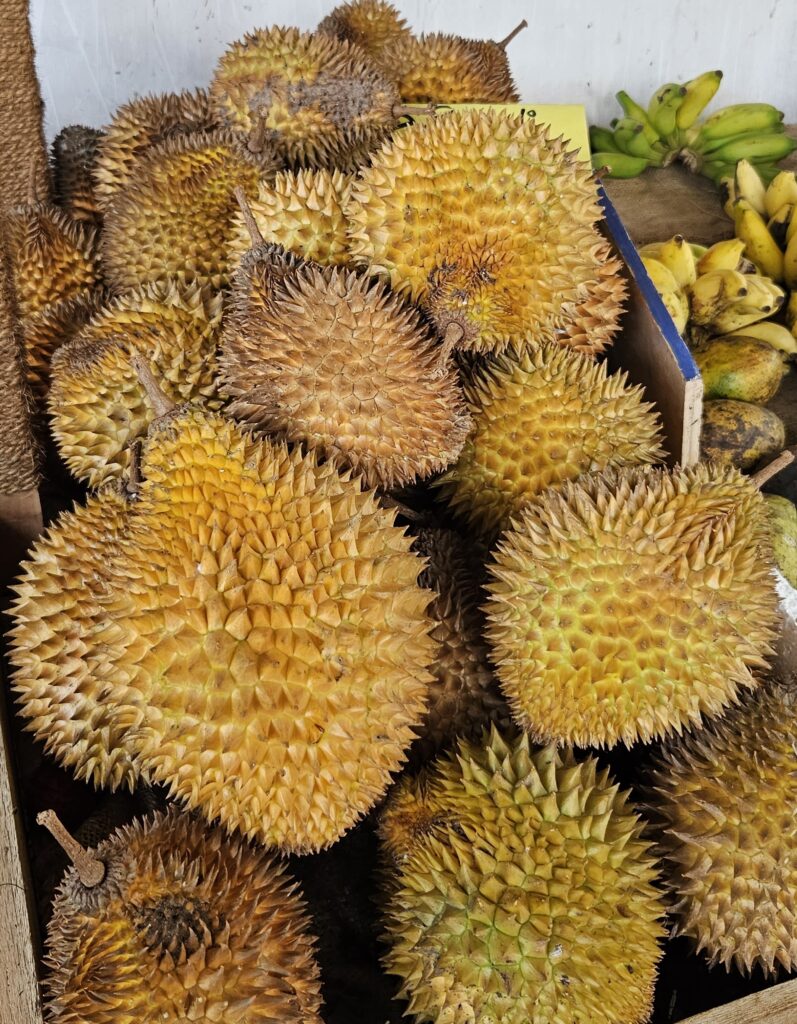
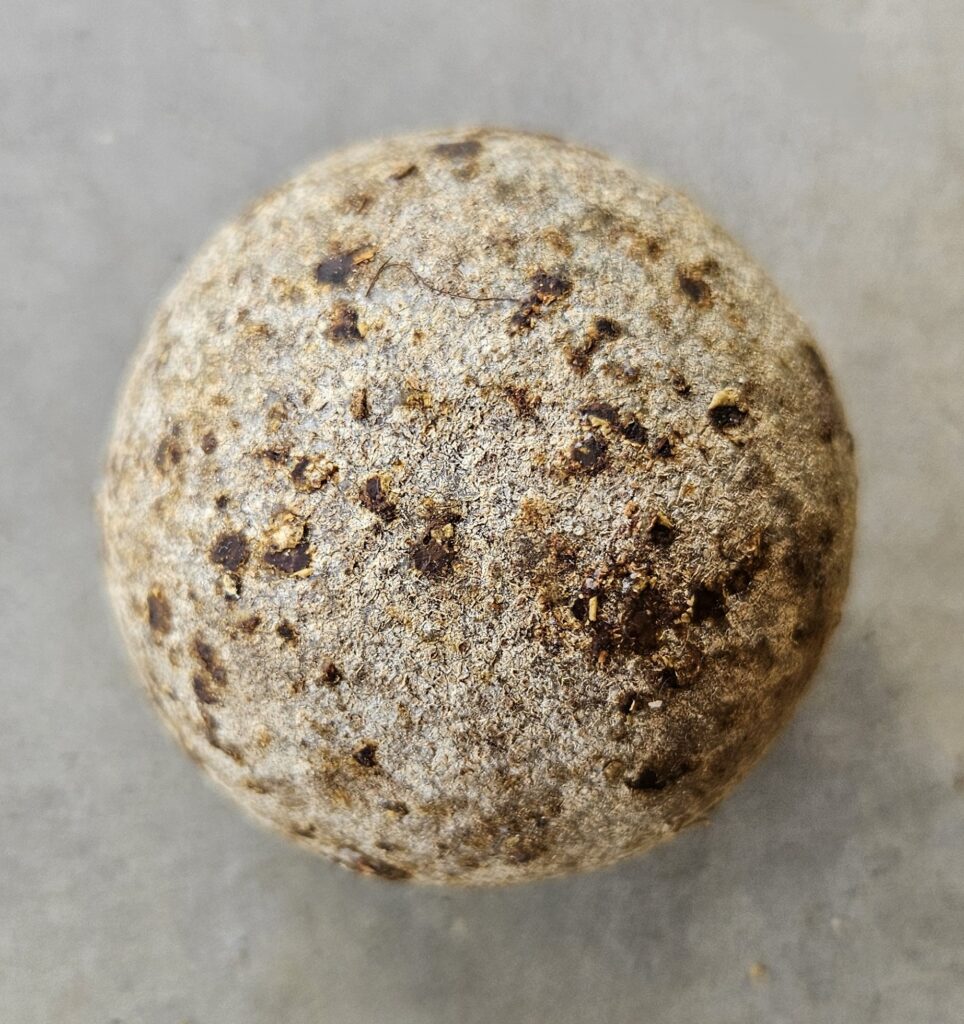
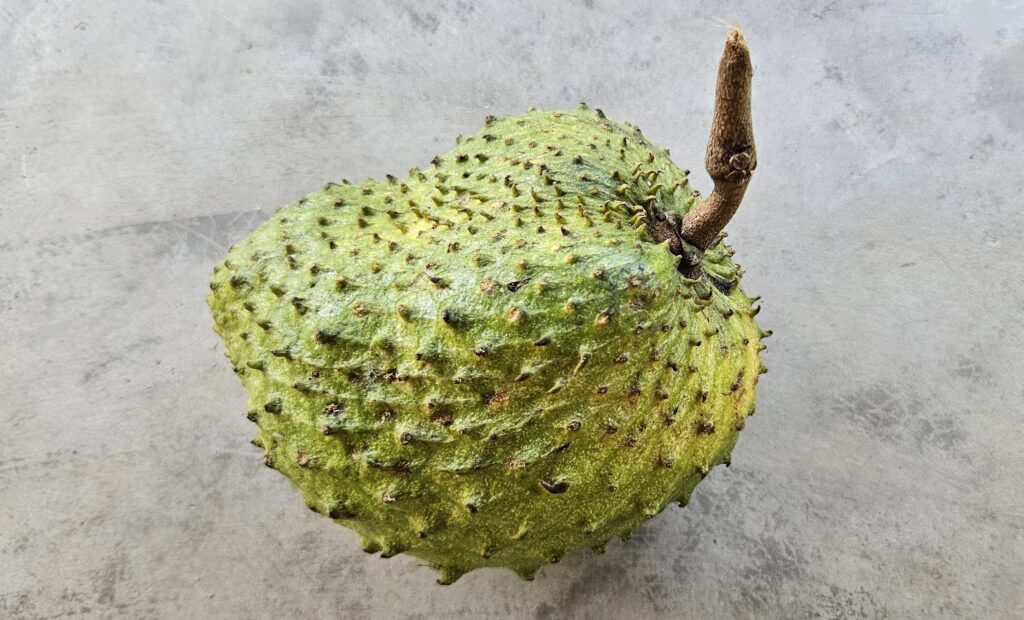
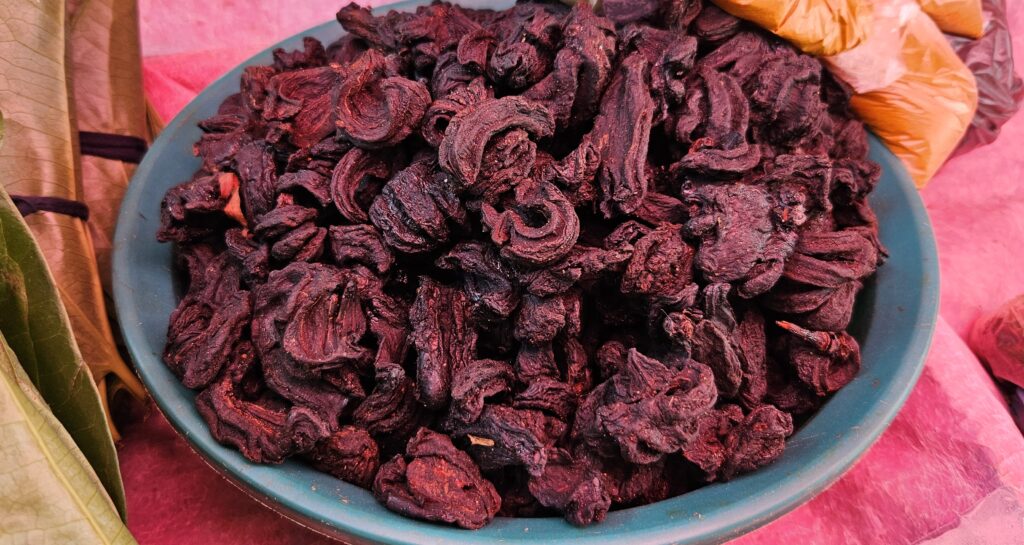
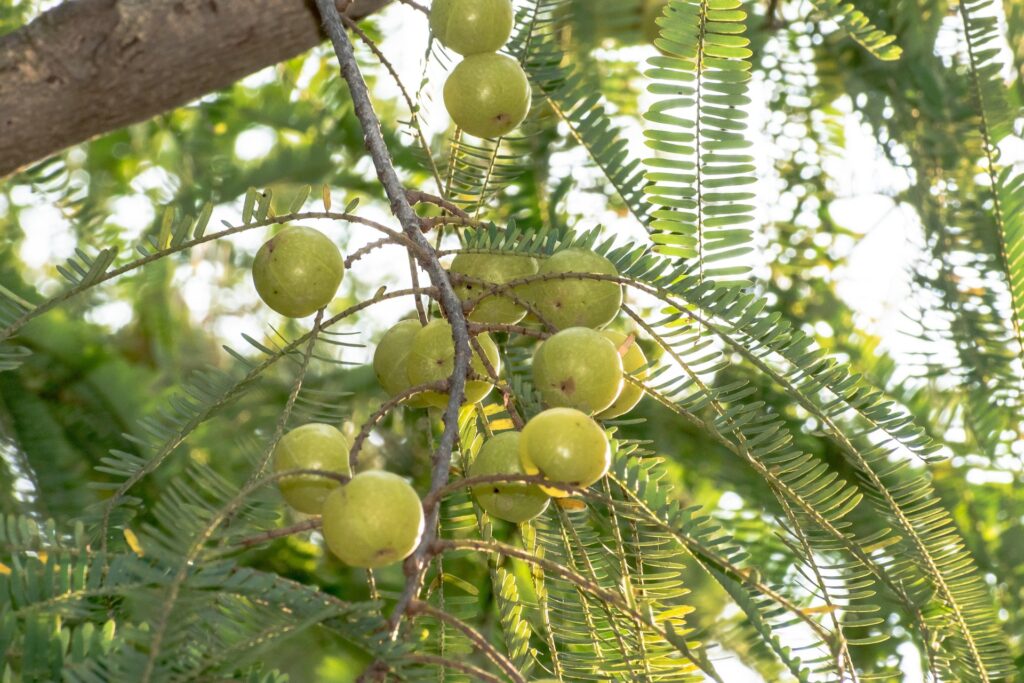
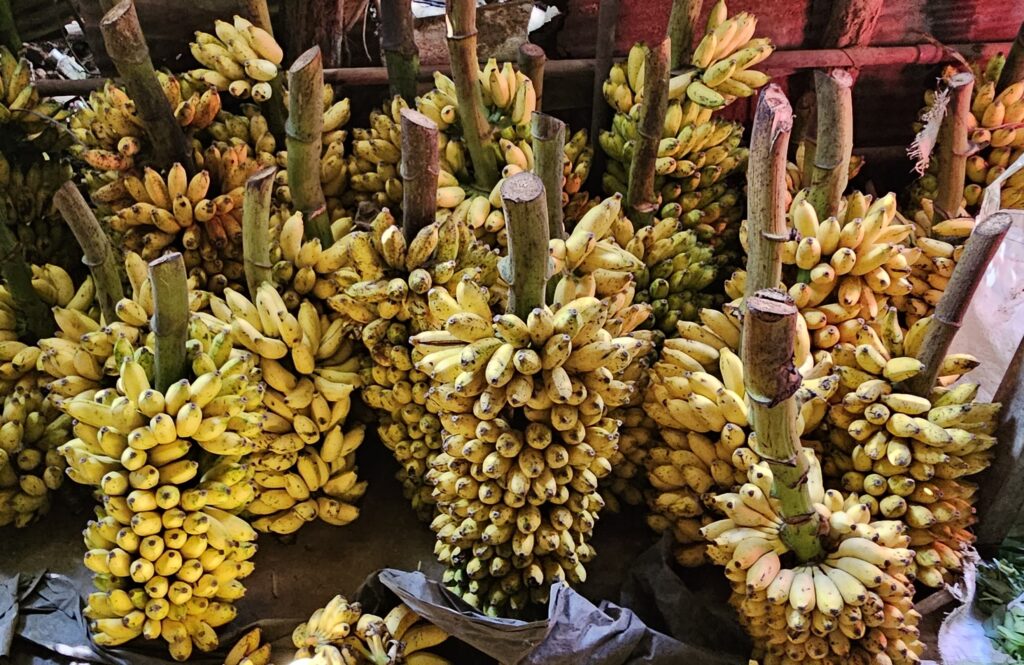
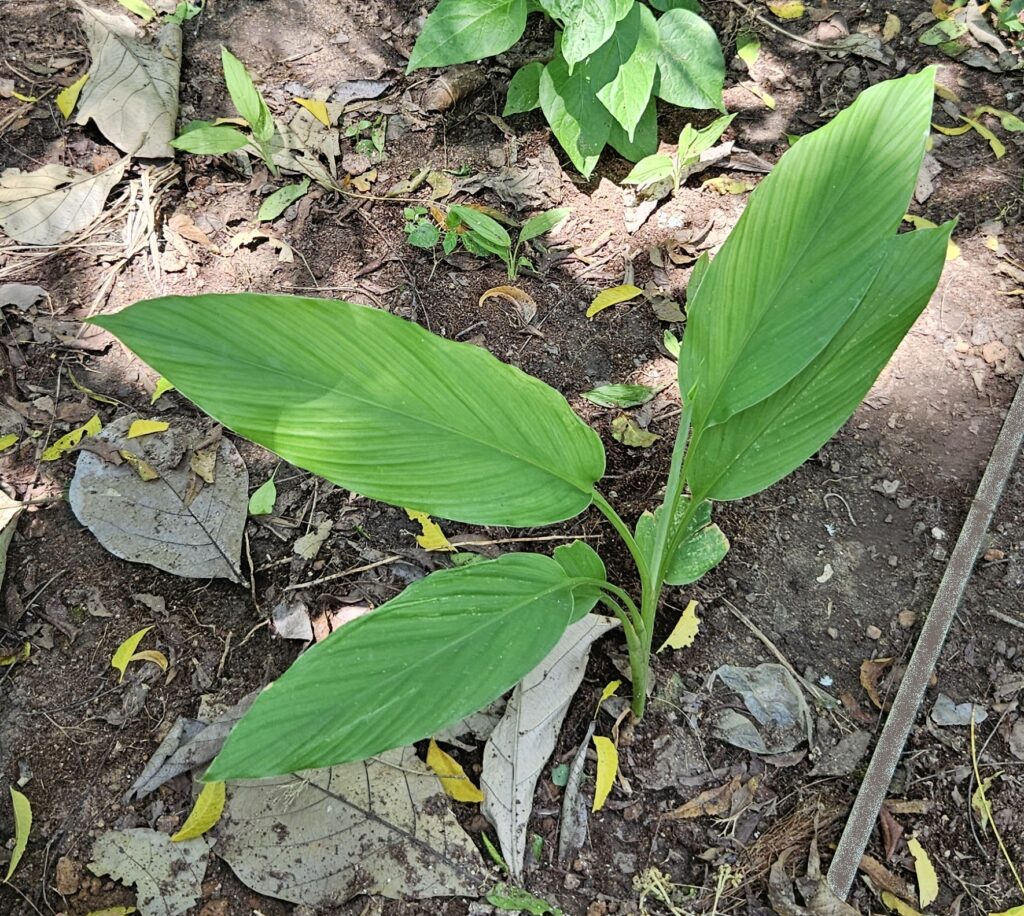
Ginger-related Plants
It is very interesting to actually see a turmeric or ginger plant. Usually, we only know the spices derived from them. Turmeric, ginger and cardamom belong to the ginger family (Zingiberaceae) as well as to a broader botanical group known as the ginger-related plants (Zingiberales); their leaves resemble each other. They share not only botanical kinship but also impressive healing properties:
The bright yellow root turmeric has been used for thousands of years in Ayurvedic and Chinese medicine. Its main active compound, curcumin, acts anti-inflammatory, antioxidant, and supports liver function. Turmeric is often used for joint problems, digestive issues, and to strengthen the immune system. When combined with black pepper, the bioavailability of curcumin is significantly increased.
Whether as tea, in curries, or chewed fresh – ginger is a true all-rounder. It helps with nausea, motion sickness, colds, and stimulates digestion and metabolism. Its essential oils and the pungent compound gingerol have anti-inflammatory, circulation-promoting, and pain-relieving effects.
The aromatic cardamom not only enhances chai tea or oriental dishes but also has medicinal properties. It is known as an antispasmodic, digestive aid, and mood enhancer. In naturopathy, it is recommended for bloating, stomach discomfort, and even bad breath.
Crepe ginger (known in Sri Lanka as Tebu or Koltan) also belongs to the ginger order. The plant has been used in Ayurveda for centuries and also has considerable healing potential: its root and leaves possess anti-inflammatory, diuretic, and digestive properties. In folk medicine, it is regarded as a natural remedy to lower blood sugar – a potential helper for type 2 diabetes. Furthermore, its constituents exhibit antibacterial effects and are used for skin problems or mild infections.
Medicinal Plants
Medicinal plants play a major role in traditional Ayurvedic medicine. In Tangalle, when we asked about the plants used in Ayurvedic massage, we were spontaneously guided through a spice garden. For each plant, a knowledgeable woman explained the different preparation methods, uses and healing properties, and showed which parts of the plants are edible. It was particularly impressive how many plants are entirely edible – from the root and bark to the leaves and flowers, such as the Beli tree.
The following plants we were able to see, smell and partially taste:
Akkapana (also known as life plant or miracle leaf, Bryophyllum pinnatum or Kalanchoe pinnata)
> Promotes wound healing, reduces inflammation, supports respiratory health and cough relief, helps with kidney and bladder issues, and is widely used as a medicinal plant in Ayurveda
Bael Tree (also Belli, Bengal quince, Aegle marmelos)
> Aids digestion, has anti-inflammatory effects, supports gastrointestinal health, strengthens the immune system, and is widely used in Ayurvedic medicine
Curry Tree (Murraya koenigii)
> Has antioxidant properties, supports digestion, lowers blood sugar levels, promotes heart health, and is widely used in Ayurvedic medicine.
Hana (Bengal hemp, sunn hemp, Crotalaria juncea)
> Possesses anti-inflammatory and antioxidant properties
Kalanduru (nut grass, Cyperus rotundus)
> Anti-inflammatory effects, promotes digestion, relieves menstrual discomfort, and is widely used in traditional medicine
Kathurumurunga (hummingbird tree, turi tree, Sesbania grandiflora)
> Strengthens the immune system, has anti-inflammatory effects, supports digestion, and is widely used in Ayurvedic medicine
Katu Anoda (soursop, Annona muricata)
> Anti-inflammatory effects, supports the immune system, helps with digestive issues, and is traditionally used for cancer prevention
Kohila (also sengmora, lasia, Lasia spinosa)
> Anti-inflammatory effects, promotes digestion, supports wound healing, and is widely used in traditional medicine
Navahandi (pencil tree or cactus, Euphorbia tirucalli)
> Anti-inflammatory effects, traditionally used for skin conditions, and possesses pain-relieving properties
Pandan (also known as East Asian vanilla, Pandanus amaryllifolius)
> Anti-inflammatory effects, supports digestion, relieves pain, and is widely used in traditional medicine
Polpala (mountain knotgrass, Aerva lanata)
> Has diuretic properties, supports kidney function, reduces inflammation, and is used for urinary tract issues
Portia Tree (Thespesia populnea)
> Anti-inflammatory effects, promotes wound healing, is used for skin problems, and has antimicrobial properties
Rathmal (also Rathambala, Ixora or jungle geranium, Ixora coccinea)
> Anti-inflammatory effects, promotes wound healing, supports skin care, and is used in traditional medicine to fight infections
Sandalwood Tree (Santalum album)
> Calming and anti-inflammatory effects, promotes skin health, and is used in aromatherapy and traditional medicine
Sariva (Indian sarsaparilla, Hemidesmus indicus)
> Detoxifying, anti-inflammatory, supports skin health, and is used in Ayurvedic medicine for body cleansing
Shatavari (Indian asparagus, Asparagus racemosus)
> Strengthens the immune system, supports women’s health, has anti-inflammatory effects, and promotes digestion
Tamarind (Tamarindus indica)
> Aids digestion, has antioxidant effects, reduces inflammation, and supports heart health
Thippili (long pepper, Piper longum)
> Stimulates digestion, has anti-inflammatory effects, strengthens the immune system, and is used for respiratory conditions
Wel Kohila (also Wal Kohila, syngonium, Syngonium angustatum)
> Anti-inflammatory effects, promotes wound healing, is used to treat skin issues, and has detoxifying properties
Lemongrass (Cymbopogon citratus)
> Has calming effects, supports digestion, reduces inflammation, and has antibacterial properties
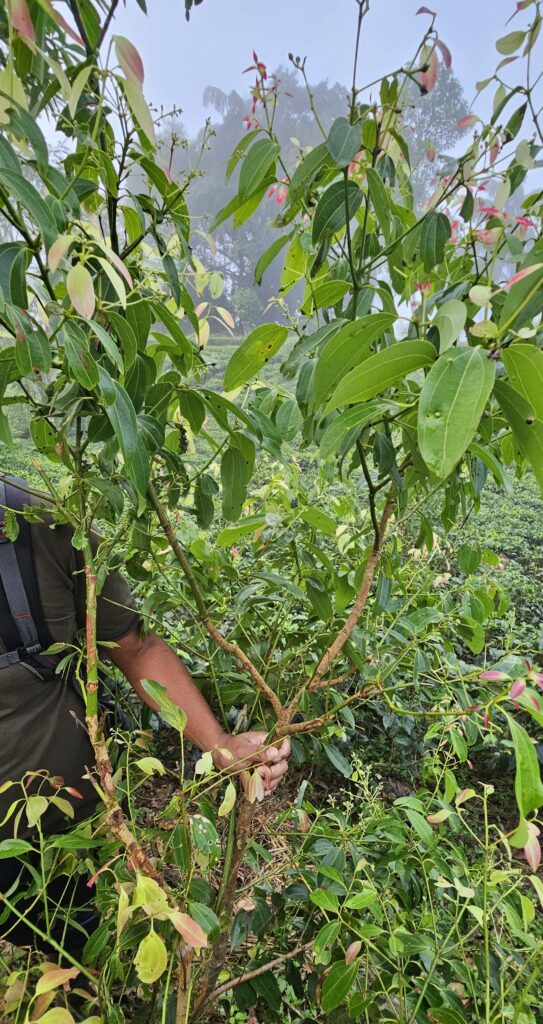
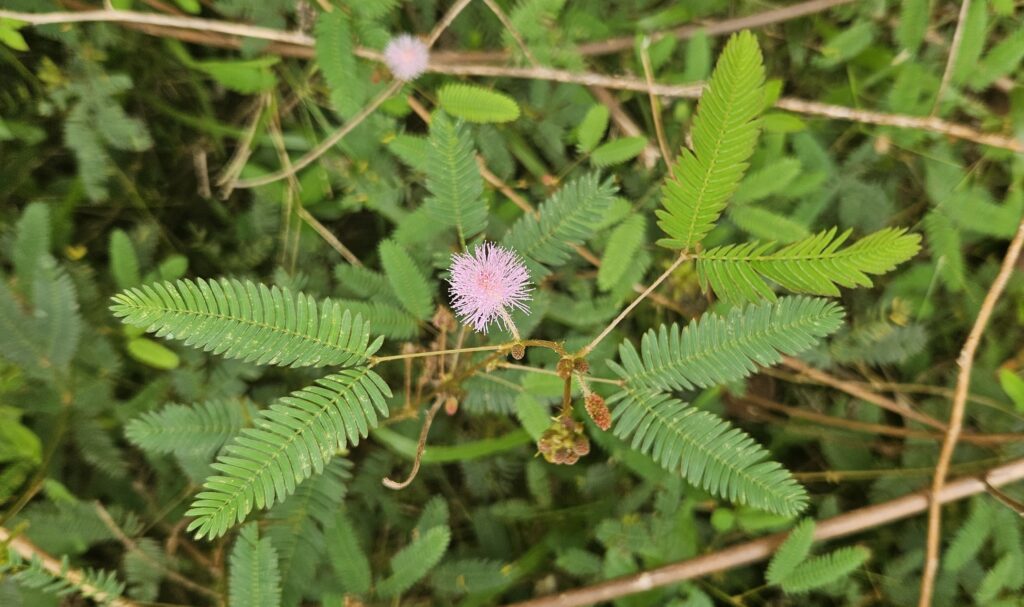
Mimosa
The mimosa (also known as the sensitive plant, Mimosa pudica) fascinates with its unusual reaction to touch: when its leaves are touched, they fold up instantly – a natural defense mechanism against predators.
Mimosas originate from South America but are now widespread worldwide and popular as ornamental plants. In Sri Lanka, we often found them covering meadows and growing along paths. Besides their sensitive leaves, their delicate pink flowers are also characteristic. The mimosa is an impressive example of how lively and responsive plants can be.
Kapok Tree
The kapok tree (Ceiba pentandra) is impressive not only because of its massive buttress roots. As one of the largest trees in the tropical rainforest, it can grow up to 75 meters tall, with a trunk over three meters thick. It can also reach a proud age of more than 500 years.
Young trees are easily recognized by the sharp, conical spines that densely cover their trunks. Kapok is also known as the wool tree. Its name comes from the cotton-like fluff harvested from its seed pods or fruits, which hang from the branches like elongated capsules – green when unripe, turning brown later. Its soft fibers are used in textile production, its oil-rich seeds are used for soaps or cooking oils, and various objects can be made from its soft wood.
Originally, kapok comes from other tropical rainforests, especially in Central and South America, where many myths surround this tree.
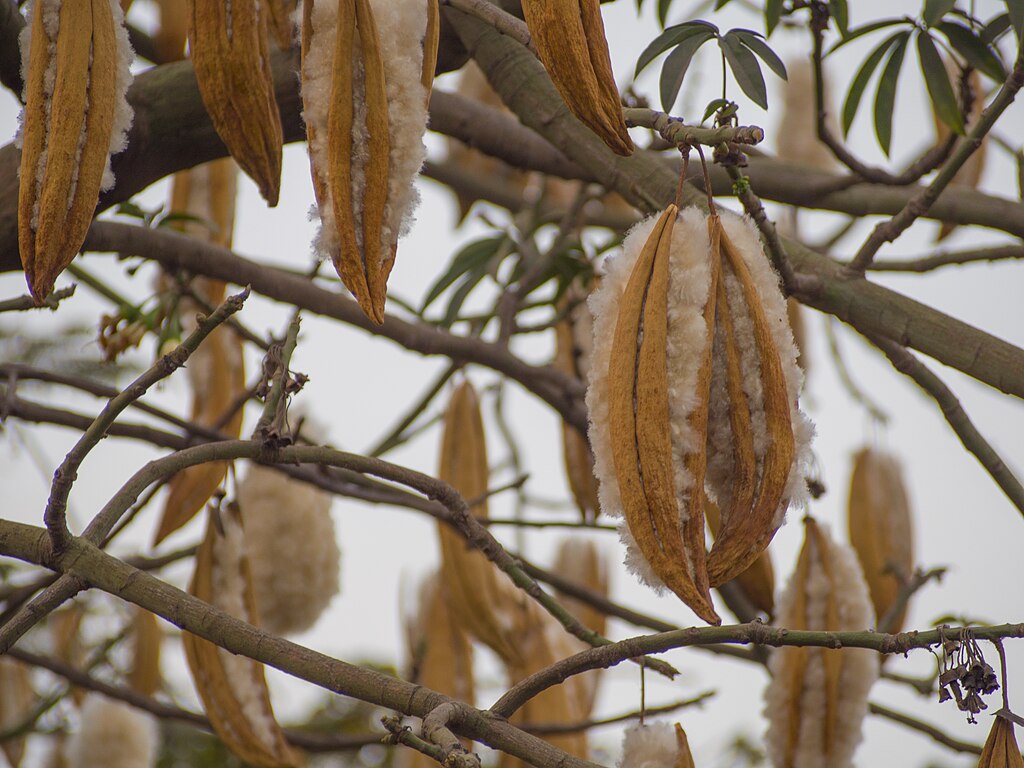
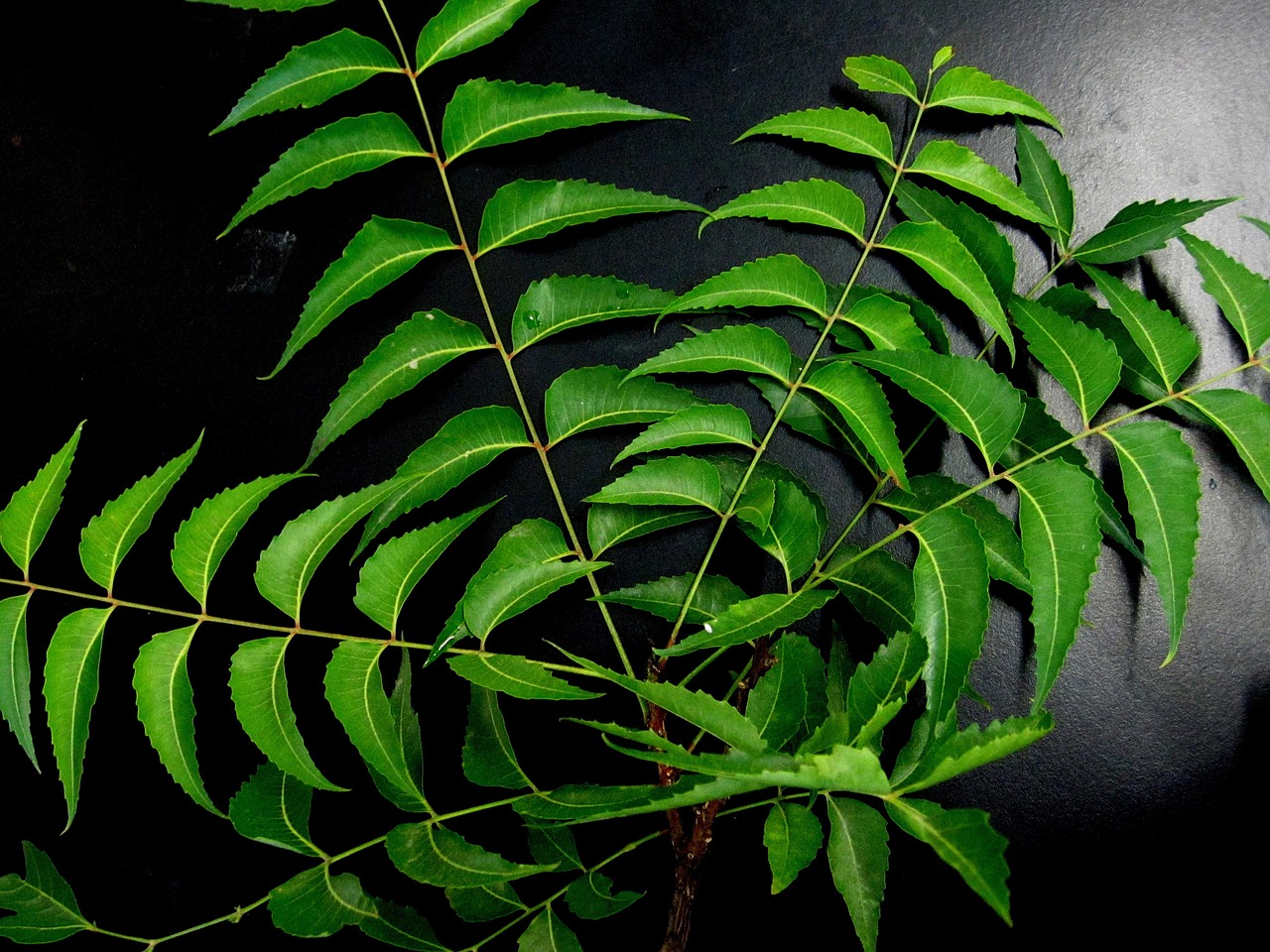
Neem, Teak and Ebony
The neem tree (Azadirachta indica) is native to Sri Lanka and valued for its antibacterial properties. Not only are the bark, leaves, fruits and seeds of the neem tree used, but its wood is also popular for making furniture – similar to the wood of the teak tree (Tectona grandis), which is also native to the region. Ebony (Diospyros), known for its rich black color and high quality, also grows here.
Palms
Sri Lanka is home to numerous palm species that shape the landscape and play an important role in people’s daily lives. Particularly fascinating is the fishtail palm (Kithul tree, toddy palm, Caryota urens), which immediately catches the eye with its fan-shaped, fishtail-like leaves.
This palm grows in the humid regions of Sri Lanka and is more than just a beautiful sight. Traditionally, palm sugar is produced from the sap of the fishtail palm, which is valued as a natural sweetener in local cuisine. Additionally, parts of the palm are used for craft purposes and in traditional medicine.
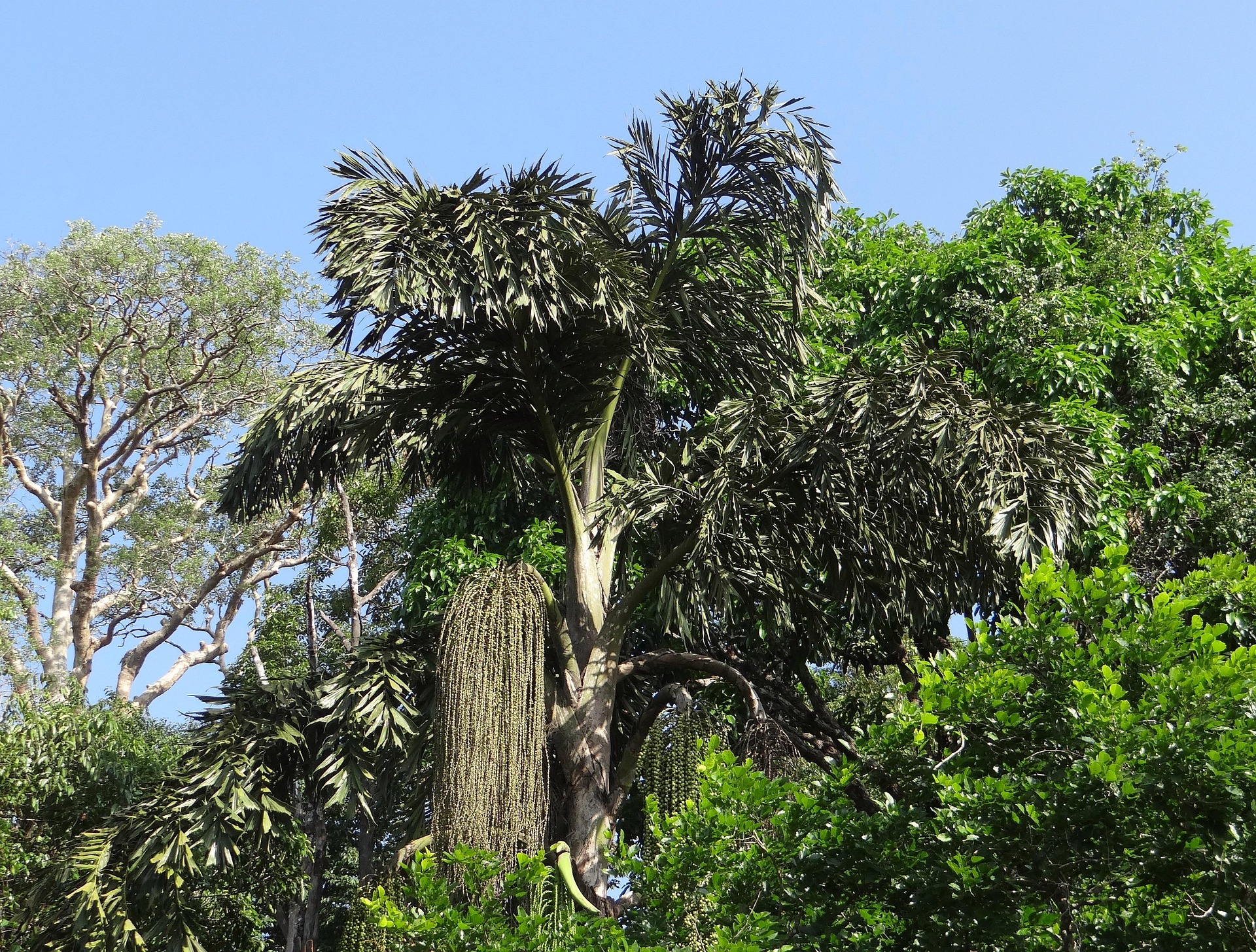
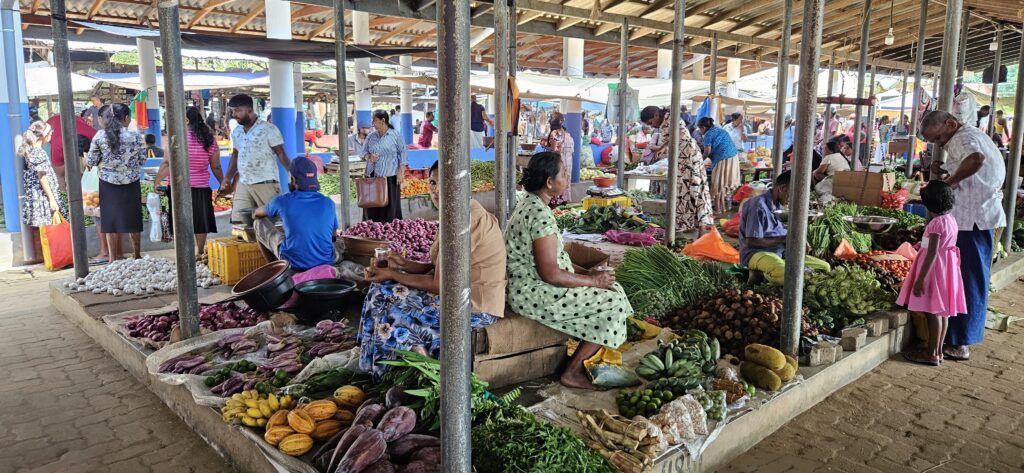
On the Markets
To experience spices, herbs as well as the various exotic fruits and vegetables, we recommend visiting the local markets. They offer a wide variety of different kinds. We visited the markets in Dikwella and Tangalle several times. It was a feast for our eyes, noses, ears and mouths.
Whenever we didn’t know what fruit or vegetable was in front of us or weren’t sure if it was ripe, the locals were always extremely friendly and helped us. They picked out ripe and even particularly beautiful or flawless fruits for us, told us their names (in Sinhala or English), or called someone over who could explain or assist. Often, we were allowed to taste right away. This made our market visits a special experience – not only culinary but also human.
Vegetables
Besides different kinds of eggplants, potatoes, pumpkins, cabbage, tomatoes, onions, beets and carrots, we also found exotic vegetables. These included:
Sengmora, which looks like water spinach (Lasia spinosa, spiny arum)
small green and white Thai eggplants (Solanum melongena)
Okra (Abelmoschus esculentus)
Bitter melon or bitter gourd (Momordica charantia)
Ridge gourd (Luffa acutangula)
Winged beans (also known as Goa beans, Psophocarpus tetragonolobus)
Snake gourds (also called snake pumpkins, Trichosanthes cucumerina)
Yard-long beans that vary in color from green to purple (Vigna unguiculata)
small green to yellow spiny gourds (Momordica dioica)
On the markets, we also noticed sugarcane and Kenda leaves (Macaranga peltata). These leaves are used for the sweet dish Helapa or to wrap jaggery.
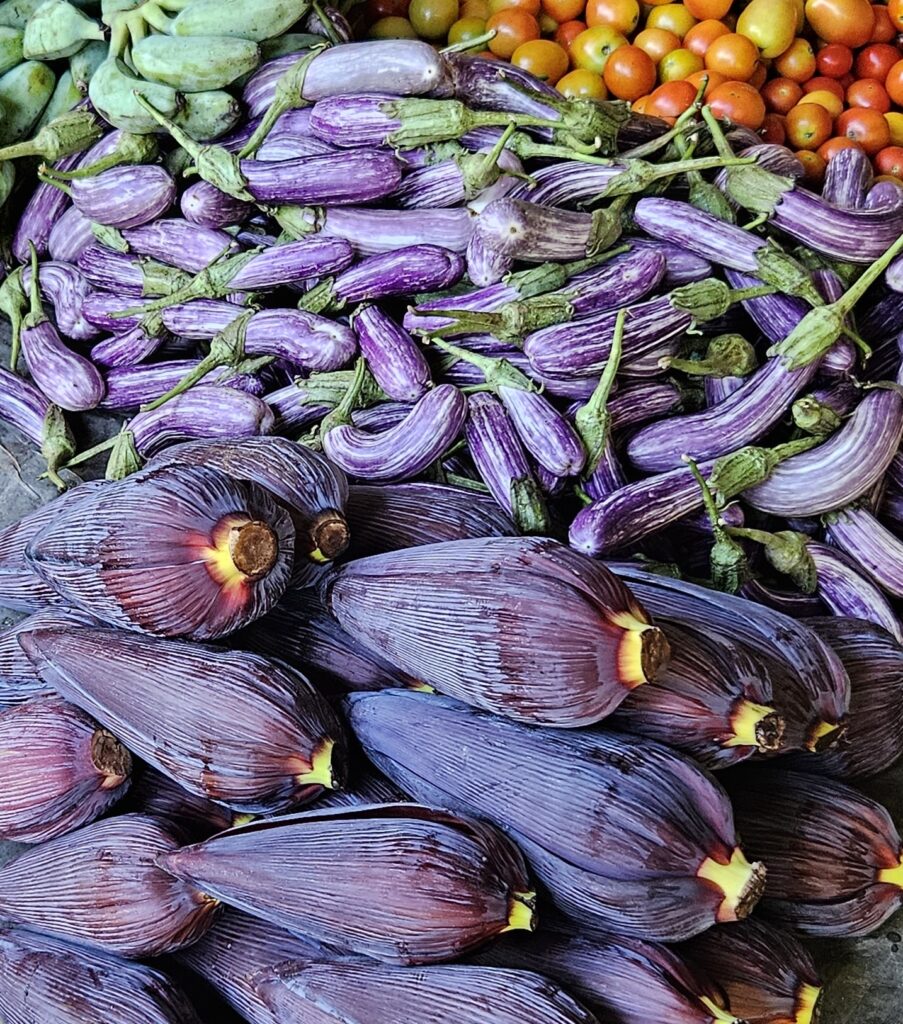




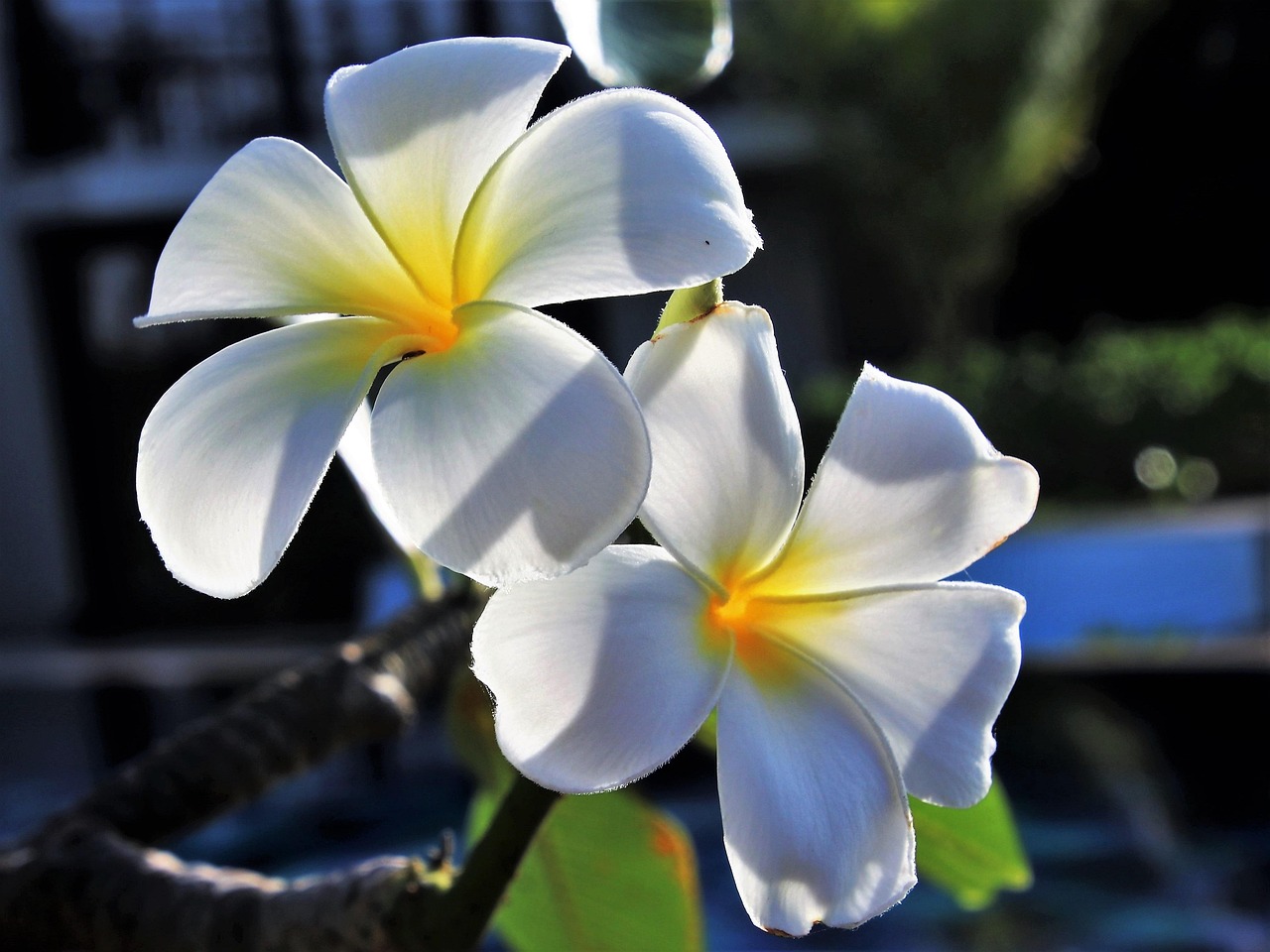
Leave a Reply